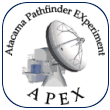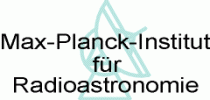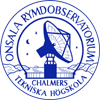SHeFI Comparison Spectra
Go directly to the receiver to view the spectra:
Introduction
On this page we present comparison spectra for the facility heterodyne receivers.
They are obtained by averaging monitoring spectra taken during different dates
during Calibration Plan observations.
The data
For the source-line combinations where a comparison spectrum exists, this is
indicated in the table by a  . Clicking on
this symbol shows the corresponding spectrum. If no such spectrum exists, this is
indicated by a
. Clicking on
this symbol shows the corresponding spectrum. If no such spectrum exists, this is
indicated by a  . This can have several meanings.
Either, the line is very weak or there is no line at all, in which case it is not
monitored at all within our Calibration Plan program. Or, this particular source/line
has been added recently to the program, in which case simply no data exist yet in
our database. In those cases a spectrum will appear sometime in the future.
. This can have several meanings.
Either, the line is very weak or there is no line at all, in which case it is not
monitored at all within our Calibration Plan program. Or, this particular source/line
has been added recently to the program, in which case simply no data exist yet in
our database. In those cases a spectrum will appear sometime in the future.
For all receivers, some lines are monitored in USB tuning as well as in LSB tuning,
while others are only observed in one sideband (the preferred one for that frequency).
To make this clear, the spectra are color-coded, with the green spectra obtained in
LSB tuning, and the blue spectra in USB tuning.
APEX-1 (230GHz)
Receiver SHeFI / APEX-1 (230GHz) -- Comparison Spectra
Note - APEX-1 is a single-sideband receiver. For CO(2-1) and
CO(5-4) we monitor the line in USB and LSB tunings, i.e. with the receiver tuned
to place the line in upper sideband (USB) and in lower sideband (LSB).
The spectra in this table show both the results of
USB tuning (plotted in
blue) and of
LSB tuning
(in green).
Line strengths may be different in the two sidebands.
|
| Species |
|
H2CO |
13CO |
CO |
CH3OH |
CS |
HCN |
| Transition |
303-202 |
2-1 |
2-1 |
50-40A |
5-4 |
3-2 |
| Frequency |
218.222 |
220.398 |
230.538 |
241.791 |
244.935 |
265.886 |
|
| o Ceti |

|

|

|

|

|

|
| L1551-IR |

|

|

|

|

|

|
| CRL618 |

|

|

|

|

|

|
| OMC1 |

|

|

|

|

|

|
| ORION-KL |

|

|

|

|

|

|
| N2071IR |

|

|

|

|

|

|
| WB947 |

|

|

|

|

|

|
| OH231.8 |

|
 |
 |

|

|
 |
| IRC+10216 |

|

|

|

|

|

|
| IRAS15194 |

|

|

|

|

|

|
| IRAS16293 |

|

|

|

|

|

|
| NGC6334I |

|

|

|

|

|

|
| M17SW |

|

|

|

|

|

|
| G34.3 |

|

|

|

|

|

|
| CRL2688 |

|

|

|

|

|

|
APEX-2 (345GHz)
Note: In March 2008, the previous APEX-2A double-sideband receiver has been replaced
by the current SHeFI APEX-2 single-sideband receiver.
The spectra shown in the following table are averaged from data taken only with this APEX-2
receiver. While for some sources/lines the differences in
line shape and calibration are insignificant, for others (e.g. CO(3-2) in ORION-KL) they
are obvious. Comparison spectra taken with the old APEX-2A receiver are not available any more
on these webpages. They may be available only upon request.
Receiver SHeFI / APEX-2 (345GHz) -- Comparison Spectra
Note - APEX-2 is a single-sideband receiver. For OCS, 13CO(3-2), and
CO(3-2) we monitor the line in USB and LSB tunings, i.e. with the receiver tuned
to place the line in upper sideband (USB) and in lower sideband (LSB).
The spectra in this table show both the results of
USB tuning (plotted in
blue) and of
LSB tuning
(in green).
Line strengths may be different in the two sidebands.
|
| Species |
|
CS |
SO |
C18O |
13CO |
CH3OH |
CS |
CO |
HCN |
HCO+ |
H2CO |
| Transition |
6-5 |
8-7 |
3-2 |
3-2 |
70-60A |
7-6 |
3-2 |
4-3 |
4-3 |
505-404 |
| Frequency |
293.912 |
304.070 |
329.331 |
330.588 |
338.405 |
342.883 |
345.796 |
354.505 |
356.734 |
362.736 |
|
| o Ceti |

|

|

|

|

|

|

|

|

|

|
| L1551-IR |

|

|

|

|

|

|

|

|

|

|
| CRL618 |

|

|

|

|

|

|

|

|

|

|
| OMC1 |

|

|

|

|

|

|

|

|

|

|
| ORION-KL |

|

|

|

|

|

|

|

|

|

|
| N2071IR |

|

|

|

|

|

|

|

|

|

|
| WB947 |

|

|

|

|

|

|

|

|

|

|
| OH231.8 |

|

|

|

|

|

|

|

|

|

|
| IRC+10216 |

|

|

|

|

|

|

|

|

|

|
| IRAS15194 |

|

|

|

|

|

|

|

|

|

|
| IRAS16293 |

|

|

|

|

|

|

|

|

|

|
| NGC6334I |

|

|

|

|

|

|

|

|

|

|
| M17SW |

|

|

|

|

|

|

|

|

|

|
| G34.3 |

|

|

|

|

|

|

|

|

|

|
| CRL2688 |

|

|

|

|

|

|

|

|

|

|
APEX-3 (460GHz)
Receiver SHeFI / APEX-3 (460GHz) -- Comparison Spectra
Note - Depending on atmospheric transmission and instrument characteristics, we
observe the various lines with the receiver tuned
to place the line in upper sideband (USB) and/or in lower sideband (LSB).
The spectra in this table show both the results of
USB tuning (plotted in
blue) and of
LSB tuning
(in green).
Line strengths may be different in the two sidebands.
|
| Species |
|
C34S |
C18O |
13CO |
H2S |
CO |
HDO |
CS |
CI |
| Transition |
9-8 |
4-3 |
4-3 |
111-000 |
4-3 |
101-000 |
10-9 |
3P1-3P0 |
| Frequency |
433.751 |
439.089 |
440.765 |
452.390 |
461.041 |
464.924 |
489.751 |
492.161 |
|
| o Ceti |

|

|

|

|

|

|

|

|
| L1551-IR |

|

|

|

|

|

|

|

|
| CRL618 |

|

|

|

|

|

|

|

|
| OMC1 |

|

|

|

|

|

|

|

|
| ORION-KL |

|

|

|

|

|

|

|

|
| N2071IR |

|

|

|

|

|

|

|

|
| WB947 |

|

|

|

|

|

|

|

|
| OH231.8 |

|

|

|

|

|

|

|

|
| IRC+10216 |

|

|

|

|

|

|

|

|
| IRAS15194 |

|

|

|

|

|

|

|

|
| IRAS16293 |

|

|

|

|

|

|

|

|
| NGC6334I |

|

|

|

|

|

|

|

|
| M17SW |

|

|

|

|

|

|

|

|
| G34.3 |

|

|

|

|

|

|

|

|
| CRL2688 |

|

|

|

|

|

|

|

|
![]() . Clicking on
this symbol shows the corresponding spectrum. If no such spectrum exists, this is
indicated by a
. Clicking on
this symbol shows the corresponding spectrum. If no such spectrum exists, this is
indicated by a ![]() . This can have several meanings.
Either, the line is very weak or there is no line at all, in which case it is not
monitored at all within our Calibration Plan program. Or, this particular source/line
has been added recently to the program, in which case simply no data exist yet in
our database. In those cases a spectrum will appear sometime in the future.
. This can have several meanings.
Either, the line is very weak or there is no line at all, in which case it is not
monitored at all within our Calibration Plan program. Or, this particular source/line
has been added recently to the program, in which case simply no data exist yet in
our database. In those cases a spectrum will appear sometime in the future.




